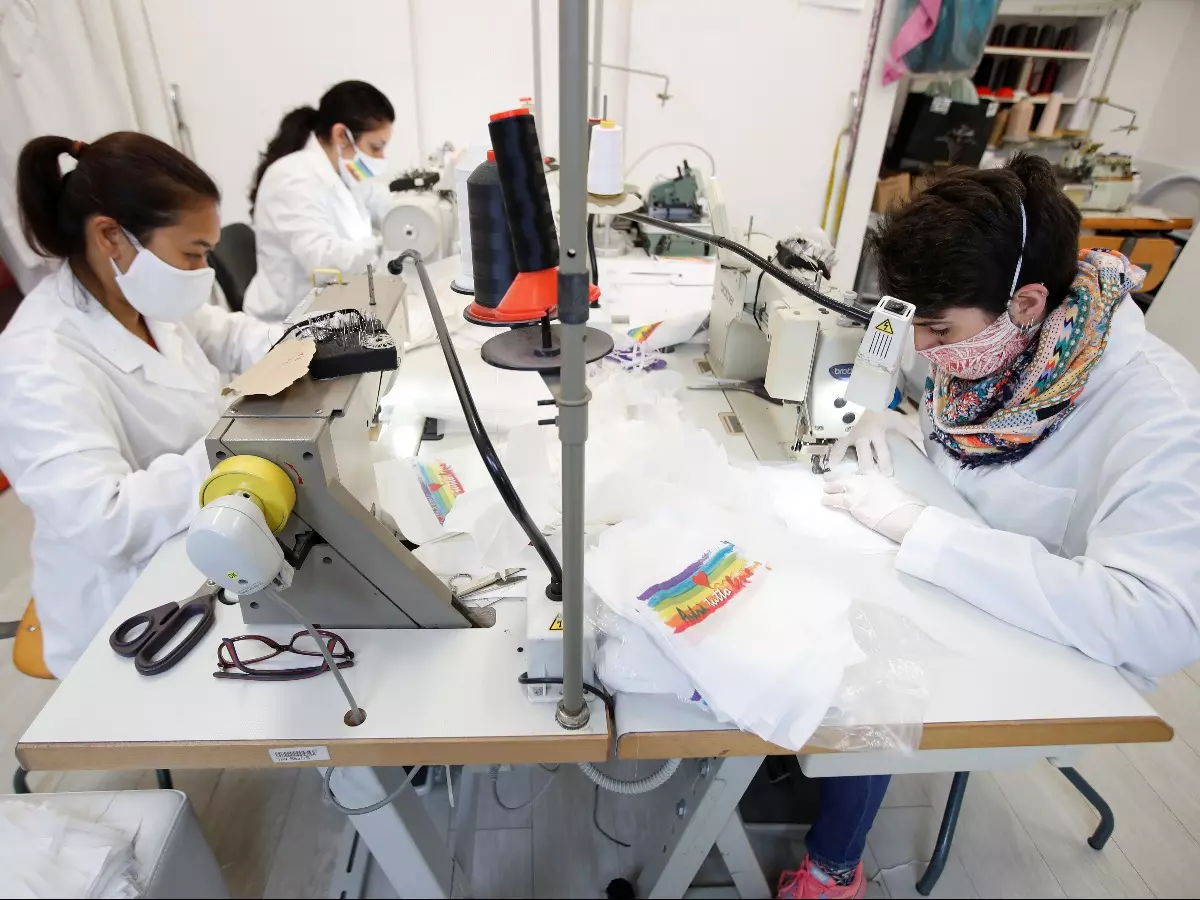Researchers Make Better N95 Masks From Material Thrown By Hospitals, You Can Sew Them Too
Halyard H600 two-ply spun polypropylene a sterile wrapping that houses surgical instrument trays is typically discarded as soon as the surgical trays are unwrapped. This material is then thrown away before it comes in contact with a patient. A UF Health anesthesiology professor has now used the same material to create an alternative for N95 masks. 500 to 1000 such masks can be accepted from the available Halyard material.

With the Coronavirus outbreak in many countries of the world leading to an acute shortage of important medical equipment like masks and ventilators, several efforts are ongoing to replicate these essentials in the easiest way possible. University of Florida¡¯s Health department of anesthesiology has now done the same for N95 masks, having made these masks even more efficient with a material already found in hospitals.
Halyard H600 two-ply spun polypropylene, a sterile wrapping that houses surgical instrument trays, is typically discarded as soon as the surgical trays are unwrapped. This material is then thrown away before it comes in contact with a patient.
 (Representative Image: Reuters)
(Representative Image: Reuters)
A UF Health anesthesiology professor has now used the same material to create an alternative for N95 masks. The Halyard material that comes in 4-by-4-foot sheets is used for this respirator mask. One sheet is able to produce a total of 10 such masks. From within UF Health hospitals, 500 to 1000 such masks can be accepted from the available Halyard material.
¡°This material is otherwise thrown out, so by taking it, cutting it and making masks out of it, we¡¯ve repurposed it,¡± said Bruce Spiess, M.D., an anesthesiology professor at the UF College of Medicine, who came up with the idea. Interestingly, Spiess also claims that the masks produced are better than regular N95 masks.
He explains that the Halyard material cannot be penetrated by water, bacteria or particles. It is able to block 99.9% of particulates. Considering this, the masks produced from it are about 4% more effective at blocking particulate material than the N95 masks.
That being said, the masks are not meant to be a replacement for the N95 masks. There purpose is to fulfill the gap in the demand and supply of the masks in the virus stricken hospitals and regions. Citing the same, UF Health hospital administrators and infection control experts have given Briess the approval to proceed with the project.
Briess plans to spread the idea throughout the country as he acknowledges that every hospital uses the Halyard material. Other members of his team are working on bringing the idea to mass production. They are aiming to do this by supplying pre-cut sizes of the material along with elastics and nose wires to people at home to sew all of these into a mask.
 (Representative Image: Reuters)
(Representative Image: Reuters)
This is not the only ongoing effort to mass produce masks. Manufacturers from various industries have dedicated their resources to produce masks amidst the COVID-19 spread. Read about how Renault is doing the same in Spain.
Earlier, we also shared an article on how people at home with sewing skills can help in producing cloth masks at their homes. If you want to be a part of the movement, click here to know the process.
